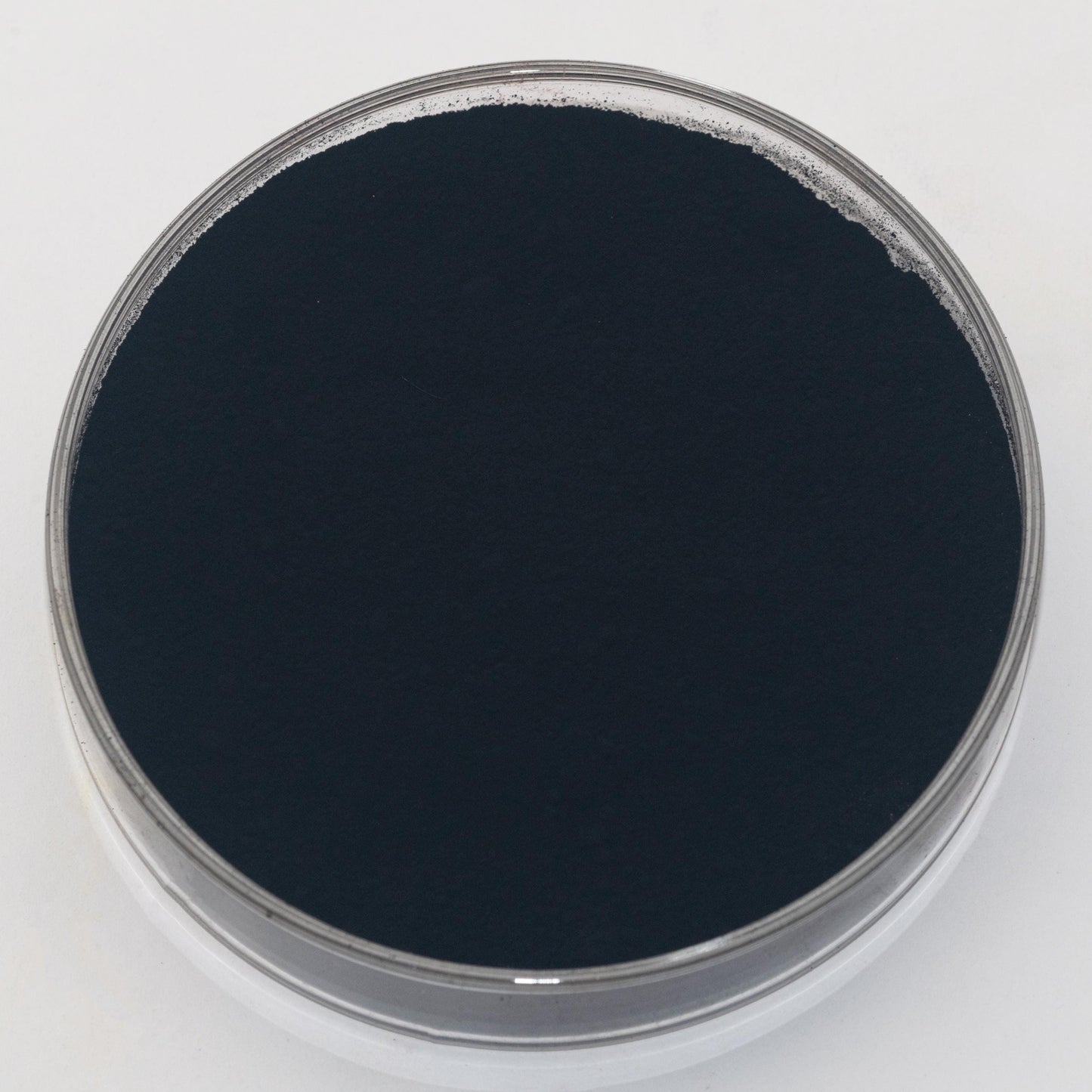Plant Black
Plant Black
Couldn't load pickup availability
Share


Description
Plant or Carbon Black is a handmade single pigment produced through the historical process of charring organic plant material in low-oxygen environments. This deep black pigment has been used for centuries, prized for its ultra fine particle size, strong tinting strength, and subtle, slight transparency. Traditionally derived from burned wood, vegetable matter, or fruit pits, it is known for its cool undertones and rich, velvety texture.
Plant or Carbon Black has exceptional lightfastness, making it highly durable for both classical and contemporary artwork. It blends seamlessly with other pigments, offering deep, harmonious tones in painting. Its high translucence allows for excellent glazing, layering, and shading effects in oil, watercolor, and tempera applications. Compared to Mars Black, it has a softer, more natural appearance, making it ideal for delicate tonal work and historical painting techniques.
History
Carbon-based black pigments have been used for thousands of years, making them one of the oldest known colorants in human history.
During antiquity, early civilizations in Egypt, Mesopotamia, and China used soot-based pigments for writing, decoration, and mural painting. The ancient Egyptians formulated carbon black inks for hieroglyphic writing on papyrus, while the Greeks and Romans used it in frescoes, pottery, and cosmetics.
In the Middle Ages and Renaissance, plant-based black pigments were widely employed in illuminated manuscripts, frescoes, and early oil painting. Artists such as Leonardo da Vinci and Rembrandt used these blacks for underpainting and subtle shading in portraiture and landscape work. The pigment’s soft, rich quality made it ideal for creating atmospheric effects and shadows. In the pictured artwork 'Deborah Kip, Wife of Sir Balthasar Gerbier, and Her Children' by Rubens, the soft black velvet of the clothing and the shadows incorporate plant black for their deep shades.
By the 18th and 19th centuries, industrial production of carbon black became more refined, and new forms such as Lamp Black and Vine Black were developed. These blacks became widely used in fine art, printing, and industrial applications, maintaining their importance as essential colors in artistic palettes.
Today, Plant or Carbon Black continues to be an important pigment for artists, conservators, and calligraphers who appreciate its historical authenticity and rich, natural depth.
Health and Safety
Precautions:
Keep out of reach of children and pets.
Do not consume.
Not for cosmetic or food usage.
Do not spray apply.
For further health information contact a poison control center.
Use care when handling dry pigments and avoid dust formation.
Use particular caution with fibrous, fine, or toxic pigments.
Do not eat, drink, or smoke near dry pigments.
Avoid breathing in pigment dust and use a NIOSH-certified dust respirator with sufficient rating for dry pigment.
Wash hands immediately after use or handling.
If dust is likely, always wear protective clothing to keep out of eyes, lungs, off skin, and out of any contact as well as keep area ventilated.
This product may contain chemicals known by the State of California to cause cancer, birth defects, or reproductive harm.
Warnings and bottle information are abbreviated.
Pigment Information
Pigment Type: Natural (Carbon-based) from organic material (Charred Wood, Fruit Pits, or Vegetable Matter)
Suitable Mediums: Watercolor, Oil, Tempera, Acrylic, Ink
Lightfastness: Best
Opacity: High translucence
Other Names: Lamp Black, Vine Black, Charcoal Black, Soot Black
Color Index Code: PBk6
Image: 'Deborah Kip, Wife of Sir Balthasar Gerbier, and Her Children' by Rubens in the National Gallery of Art


